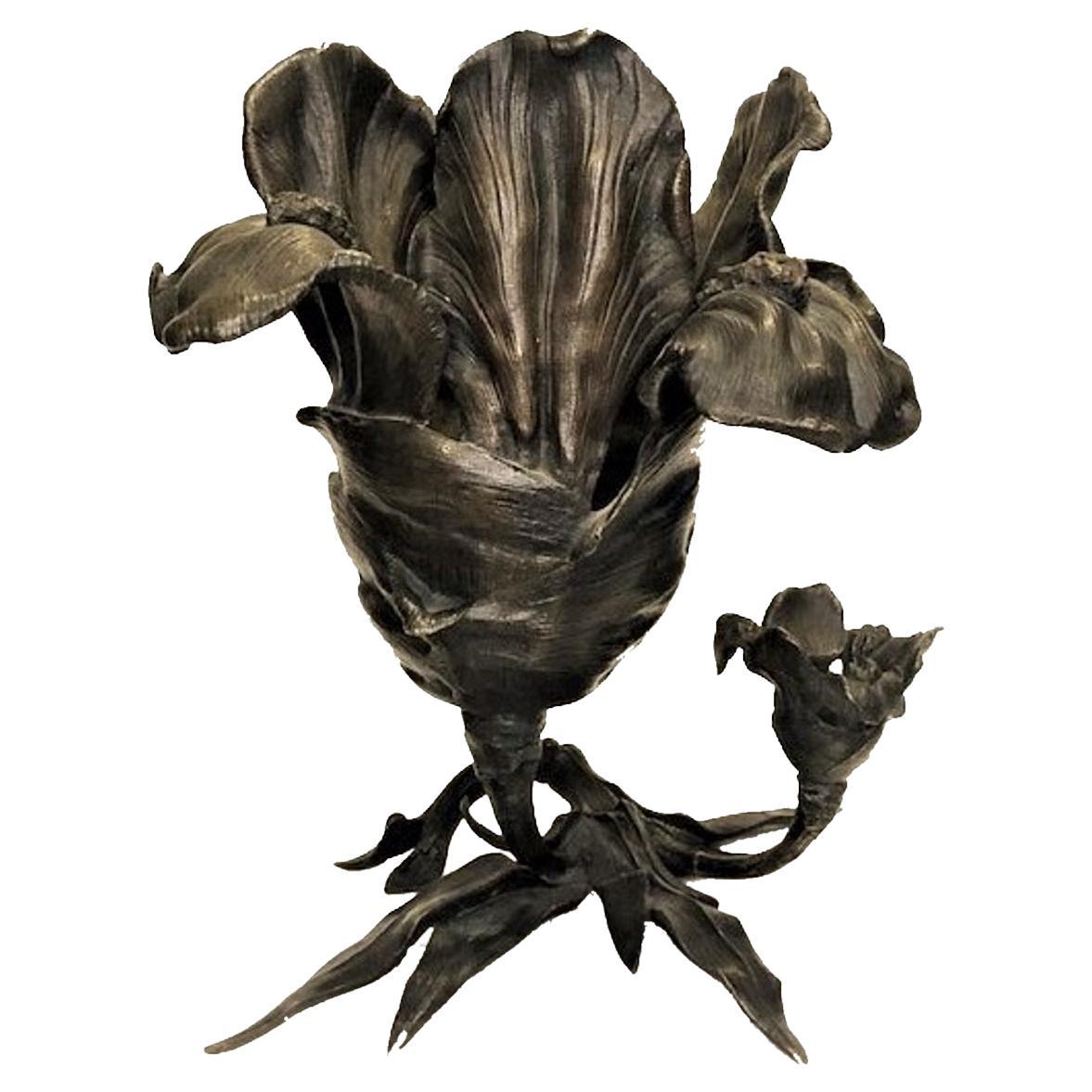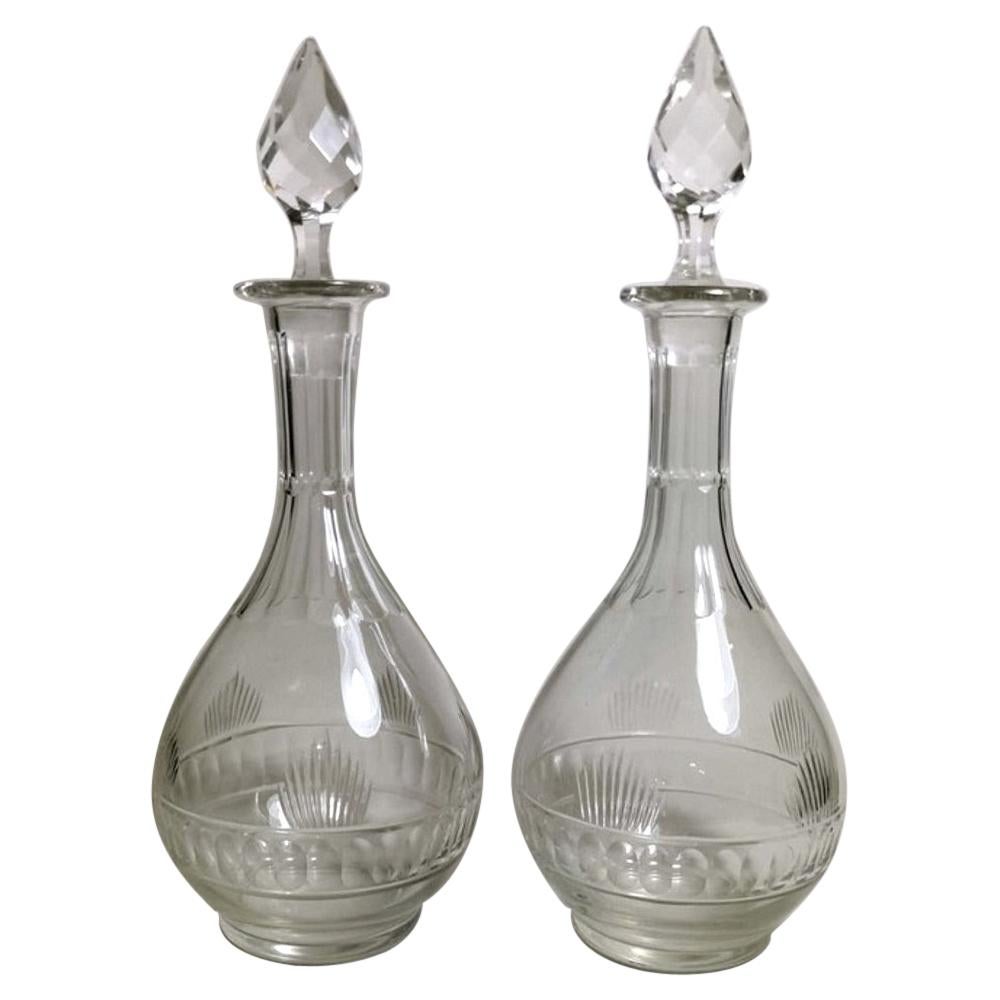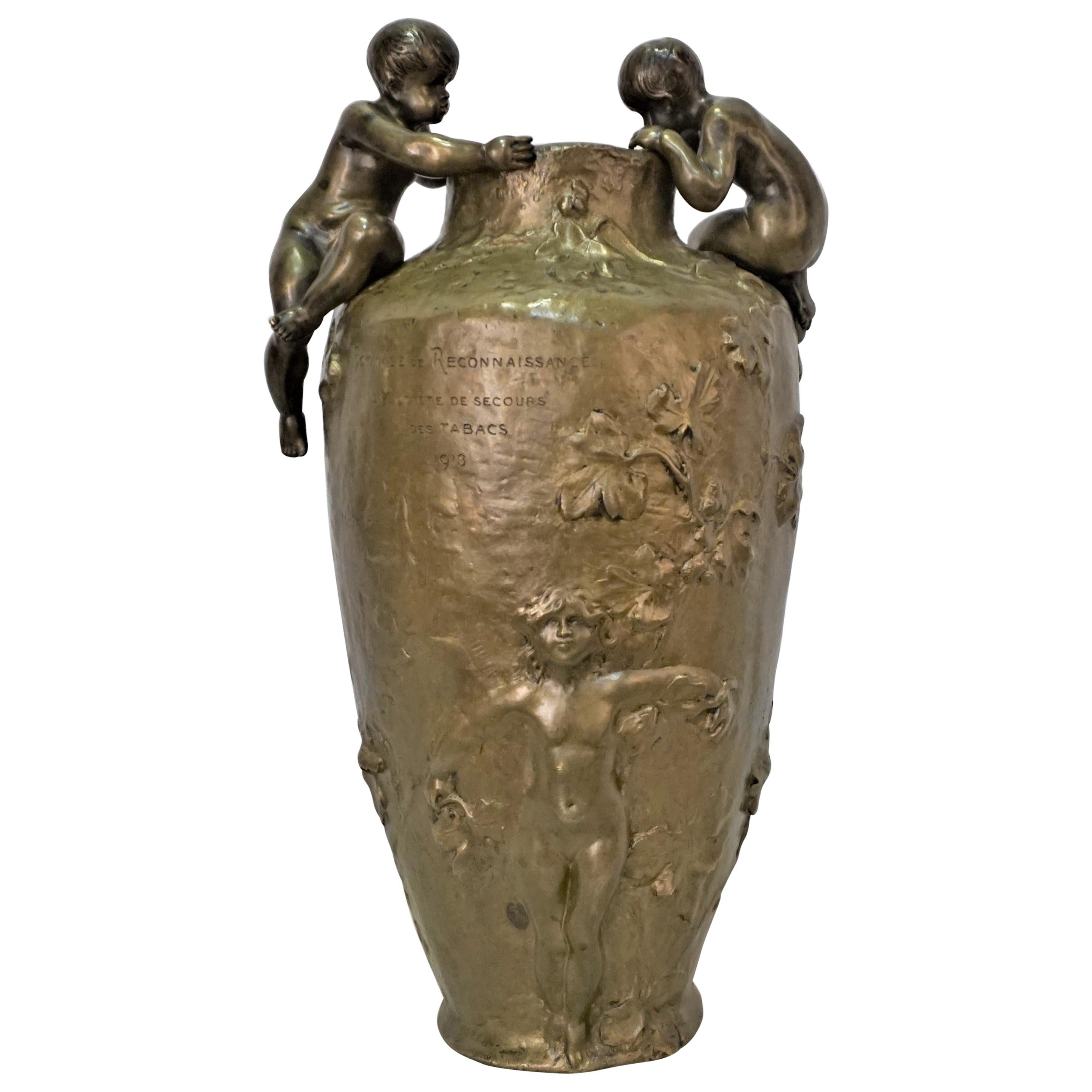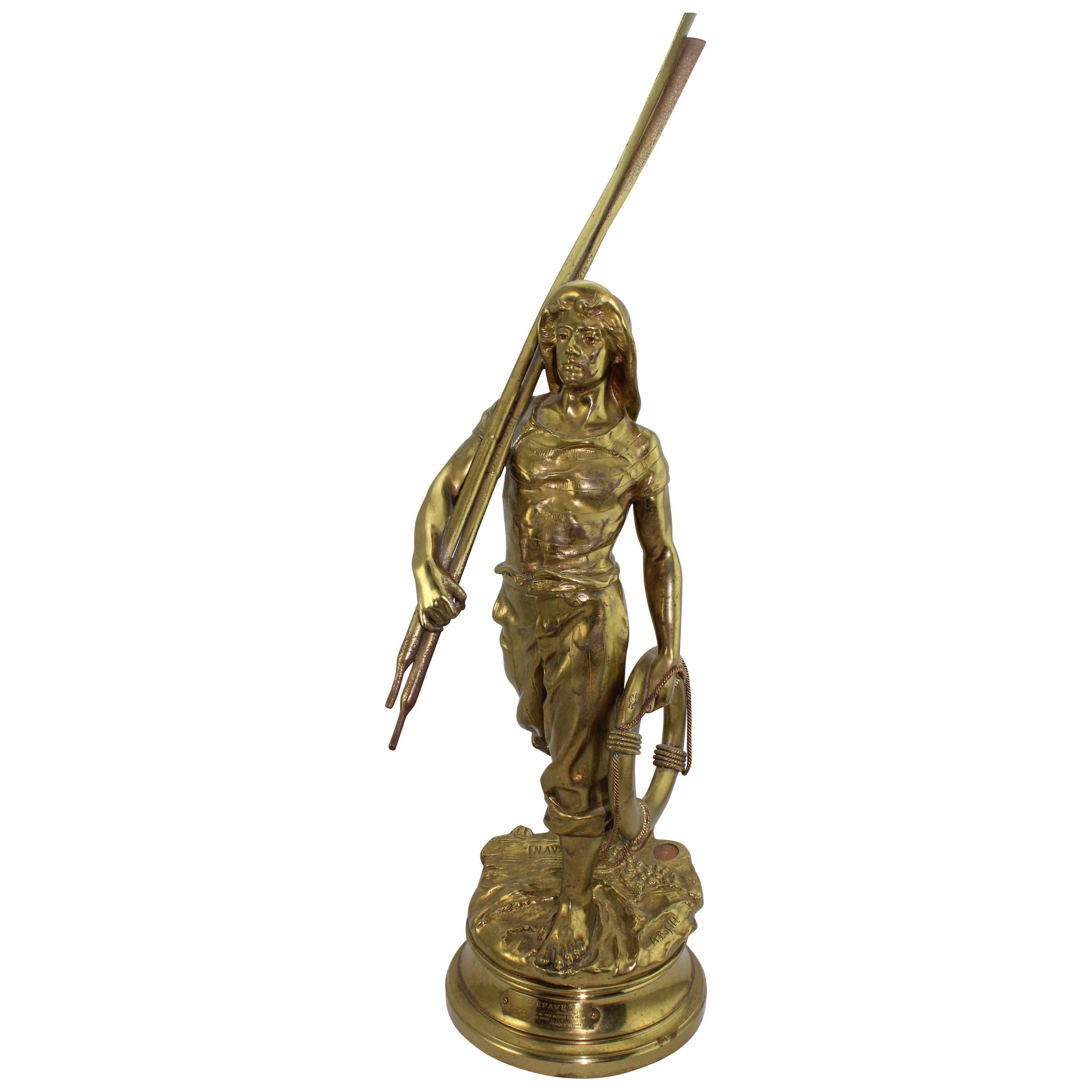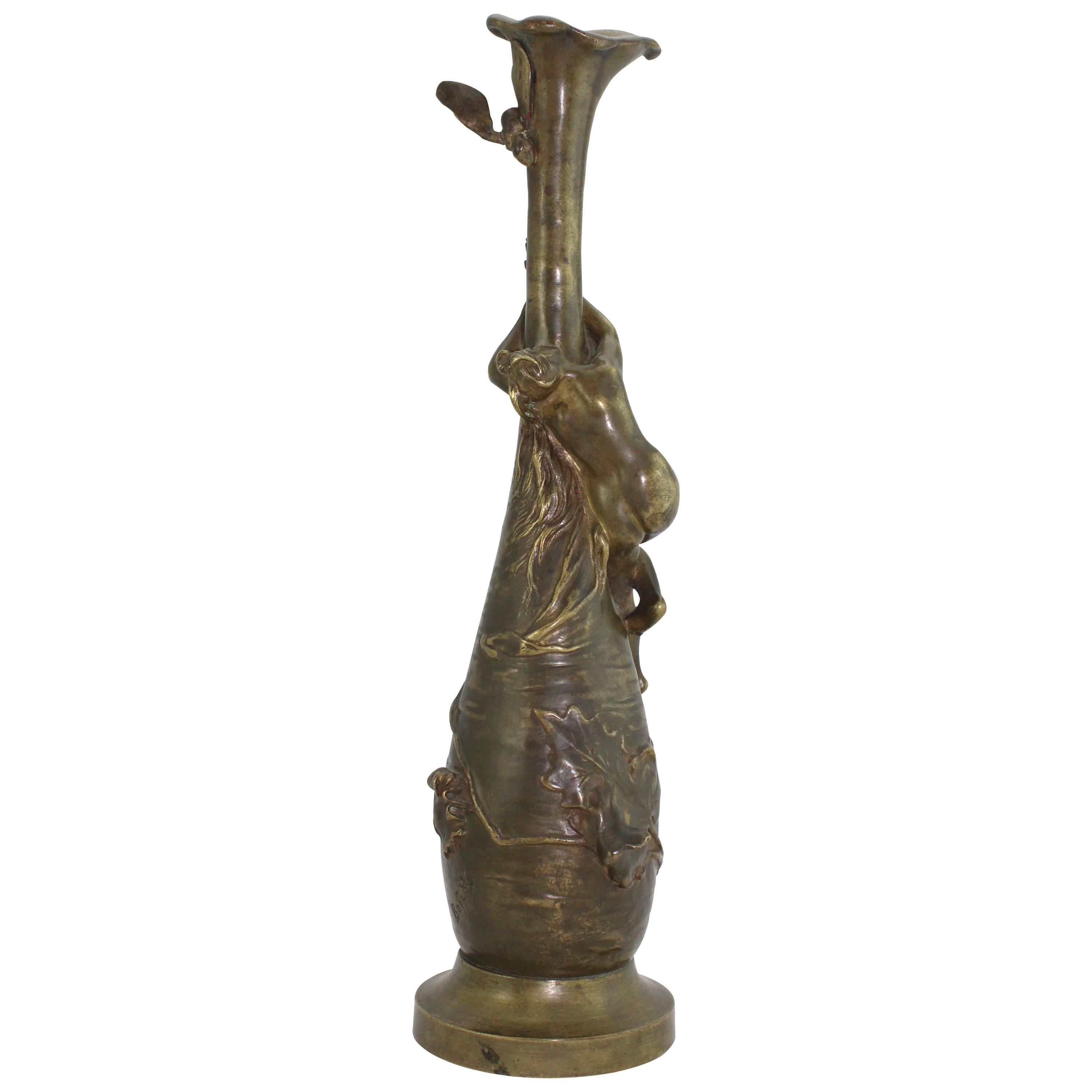Items Similar to French Beaux Arts, Patinated Bronze Figural Vase by A. Bofill, Ca. 1900
Want more images or videos?
Request additional images or videos from the seller
1 of 12
French Beaux Arts, Patinated Bronze Figural Vase by A. Bofill, Ca. 1900
About the Item
Antoine Bofill (Spanish-French, 1875-1925) was a Spanish artist and member of the Animalier movement of the 19th century. Best known for his small, decorative bronze sculptures, Bofill often focused on Neoclassical themes, historical scenes, female nudes, and, most frequently, animals.
His intricate and realistic works are especially notable for their frequent inclusion of ivory in his miniature bronze casts, an unusual practice that set him apart from the other sculptors of his time.
Born in 1875 in Barcelona, Spain, he studied at the Academy of Beaux Arts in Barcelona, Spain, before garnering contact with the Parisian art world. He went on to regularly exhibit in the prestigious salons of Societe des Artistes from 1901 to the mid-1920s.
Bofill is thought to have died sometime after 1925.
- Creator:Antoine Bofill (Sculptor)
- Dimensions:Height: 6.5 in (16.51 cm)Width: 6.5 in (16.51 cm)Depth: 5 in (12.7 cm)
- Style:Beaux Arts (Of the Period)
- Materials and Techniques:Bronze,Patinated
- Place of Origin:
- Period:1900-1909
- Date of Manufacture:circa 1900
- Condition:Wear consistent with age and use. We make our best effort to provide a fair and descriptive condition report. Please examine photos attentively, as they are part of the description. Send us a message to request more details or discuss price.
- Seller Location:New York, NY
- Reference Number:1stDibs: LU2819323270422
About the Seller
5.0
Vetted Seller
These experienced sellers undergo a comprehensive evaluation by our team of in-house experts.
Established in 1993
1stDibs seller since 2017
68 sales on 1stDibs
Typical response time: 2 hours
- ShippingRetrieving quote...Ships From: New York, NY
- Return PolicyA return for this item may be initiated within 10 days of delivery.
More From This SellerView All
- French Art Nouveau Patinated Bronze Sculptural Iris Vase, ca. 1900Located in New York, NYABOUT IRIS The iris is a special and mysterious flower. Not only because of its striking appearance, but also from an artistic and historical point of view. It is also like a work of art, as though created by Mother Nature. The unique leaves of this plant not only create wonderful shadow casts, but also look as if they were painted by hand. It's no wonder that iris acts as the muse for countless artists, and can be seen in many famous works of art. The iris was first spotted in the time of Pharaoh Thutmose, in 1504 BC. He had the iris inscribed into the wall reliefs of a temple as a sign of his power, as well as decorating his sceptre with motifs of the flower. Since then, the iris has been a symbol of victory in Egypt. But the symbolism of the iris goes further than that. In Japan, the flower represents courage and is the symbol of the boys' festival. In Islamic cultures, the iris is a symbol of prosperity. In Europe, the flower was a popular weapon symbol in the Middle Ages and stood for chivalry. And in Christianity, the iris was seen as a symbol of the trinity because of its three-part flowers. With more than 300 varieties, the iris is now the most popular flower among growers and gardeners following the rose. Countless artists use the iris in their works and the flower is present in all eras. You can see the flower on furniture, vases, jewelry, fabrics, sculptures, coats of arms and much more. Did you know that the iris is also called the sword lily? It's not a coincidence that it used to symbolize physical and emotional pain and suffering caused by a weapon. We also see the flower in religious art, where it's often associated with Mary and Jesus. The iris is also associated with the Greek goddess Iris, where the flower symbolizes reconciliation and divine messages. This is also reflected in many paintings. Finally, the iris is also visible in Dutch and Flemish still-life paintings. This can be in a religious form, incorporated into an object or as a decorative flower. In the Art Nouveau art movement, the iris (along with other plants, such as the birch) was often used as an expression of feminine beauty. With its almost otherworldly appearance, the iris is perfectly suited to the Art Nouveau aesthetic and is featured in many well-known works of art. The poet of that era, Hermann Hesse...Category
Antique Early 1900s French Art Nouveau Planters, Cachepots and Jardinières
MaterialsBronze
- Gustave-Joseph Chéret, French Belle Époque Figural Bronze Vase, ca. 1885By Gustave-Joseph ChéretLocated in New York, NYGustave-Joseph Chéret French Belle Époque Patinated Bronze Figural Flower Vase ca. 1882 Signed ‘Joseph Chéret’ and E. Soleau. Editr. Paris Exqu...Category
Antique 1880s French Belle Époque Vases
MaterialsBronze
- French Art Nouveau Iridescent Stoneware & Bronze Vase or Cachepot, ca. 1900sLocated in New York, NYFrench Art Nouveau Ocean Life Theme Vase Cachepot Iridescent Stoneware & Patinated Bronze Crab Appliqué ca. 1900s ABOUT We present here a most unusual and utterly decorative Fren...Category
Antique Early 1900s French Art Nouveau Vases
MaterialsStoneware
- Japanese Art Nouveau Meiji Period Patinated Bronze Vase, circa 1900Located in New York, NYAlthough unmarked, this rare and important, grand but at the same exquisite patinated bronze vase has just a very few little details, defying the shape of the handles, as well as the...Category
Antique Early 1900s Japanese Art Nouveau Vases
MaterialsBronze
- Frederic Rhead, a Pair of Arts & Crafts Terracotta Vases with Peacocks, ca. 1900By Frederick Hurten RheadLocated in New York, NYFrederic Rhead, a pair of English Arts & Crafts Glazed terracotta vases with Peacocks, circa 1900. This outstanding pair of English Arts & Crafts gla...Category
Antique Early 1900s English Arts and Crafts Vases
MaterialsTerracotta
- Paul Loiseau-Rousseau, French Art Nouveau Gilt Bronze Jug, Ca. 1900By Paul Loiseau-Rousseau 1Located in New York, NYPaul Louis Emile Loiseau-Rousseau (French, 1861-1927) was a famous French sculptor. In his youth, he planned to devote himself to etching, was a student of Antoine-Louis Barye at the...Category
Antique Early 1900s French Art Nouveau Vases
MaterialsBronze
You May Also Like
- Neoclassical Parisian Style Beaux Arts Pair of French BottlesLocated in Prato, TuscanyWe kindly suggest you read the whole description, because with it we try to give you detailed technical and historical information to guarantee the authenticity of our objects. Refined and elegant pair of French crystal bottles; their shape is classically bulb-shaped; they have simple and delicate grinding; the pointed caps have been ground with a precise facet to enhance the refraction of light; made in Beaux-Arts style between 1900 and 1905 by a Craft company near Paris; the Parisian style...Category
Early 20th Century French Beaux Arts Crystal Serveware
MaterialsCrystal
- Paul Moreau-Vauthier a Patinated Bronze Figural VaseBy Paul Moreau-VauthierLocated in Fairfax, VACast bronze with a young female sprite and a putto climbing leafy tree and two figural putto handles. Presentation piece.Category
Antique Early 1900s French Art Nouveau Vases
MaterialsBronze
- Antoine Bofill Bronze of a Sea Man with Oars, French, circa 1900By Antoine BofillLocated in Dallas, TXThis larger than life gold gilded bronze of a sea man with oars will decorate any area and be a great conversation piece. The composition and casting detail are amazing. This is the ...Category
Antique Early 1900s French Art Nouveau Figurative Sculptures
MaterialsBronze
- Antoine Bofill Art Nouveau Nude Bronze Sculpture, circa 1900By Antoine BofillLocated in Dallas, TXThis is one of Antoine Bofill's best models, being a signature Art Nouveau nature form with a beautiful nude nymph gazing upon a bumble bee insect. The patina on this statue figure i...Category
Antique Early 1900s French Art Nouveau Figurative Sculptures
MaterialsBronze
- French Sculpture by Antoine BofillBy Antoine BofillLocated in Winter Park, FLA large metal sculpture of a Native American man riding a galloping horse. Entitled "Indien au Lasso" by Antoine Bofill (1875-1939) a Spanish sculptor who lived and worked in Paris. ...Category
Early 20th Century French Figurative Sculptures
MaterialsMetal
- Pair of Monumental Italian Beaux-Arts Footed PlantersBy Dini e Cellai Signa 1Located in Palm Springs, CAA matching pair of large terra cotta planters with winged gargoyle feet by Dini E Cellai Company. Stamped DINI E CELLAI SIGNA on the bottom. ...Category
Antique Early 1900s Italian Beaux Arts Ceramics
MaterialsStoneware
Recently Viewed
View AllMore Ways To Browse
Barcelona Spain
Patinated Bronze Vase
Antique Vase Decorative Arts
Vase French Neoclassical
Mid Century Bronze Vase
Bronze Vase Mid Century
Small Bronze Vase
Antique Bedroom Sets 1900
Neoclassic Bronze Vase
Neoclassical Bronze Vase
Neoclassic Gold Vase
French Art Vase Set
Antique Barcelona
France Small Vase Mid Century
Bronze Figural Vase
Miniatures On Ivory
Antique Ivory Vase
Ivory Vases Antique
